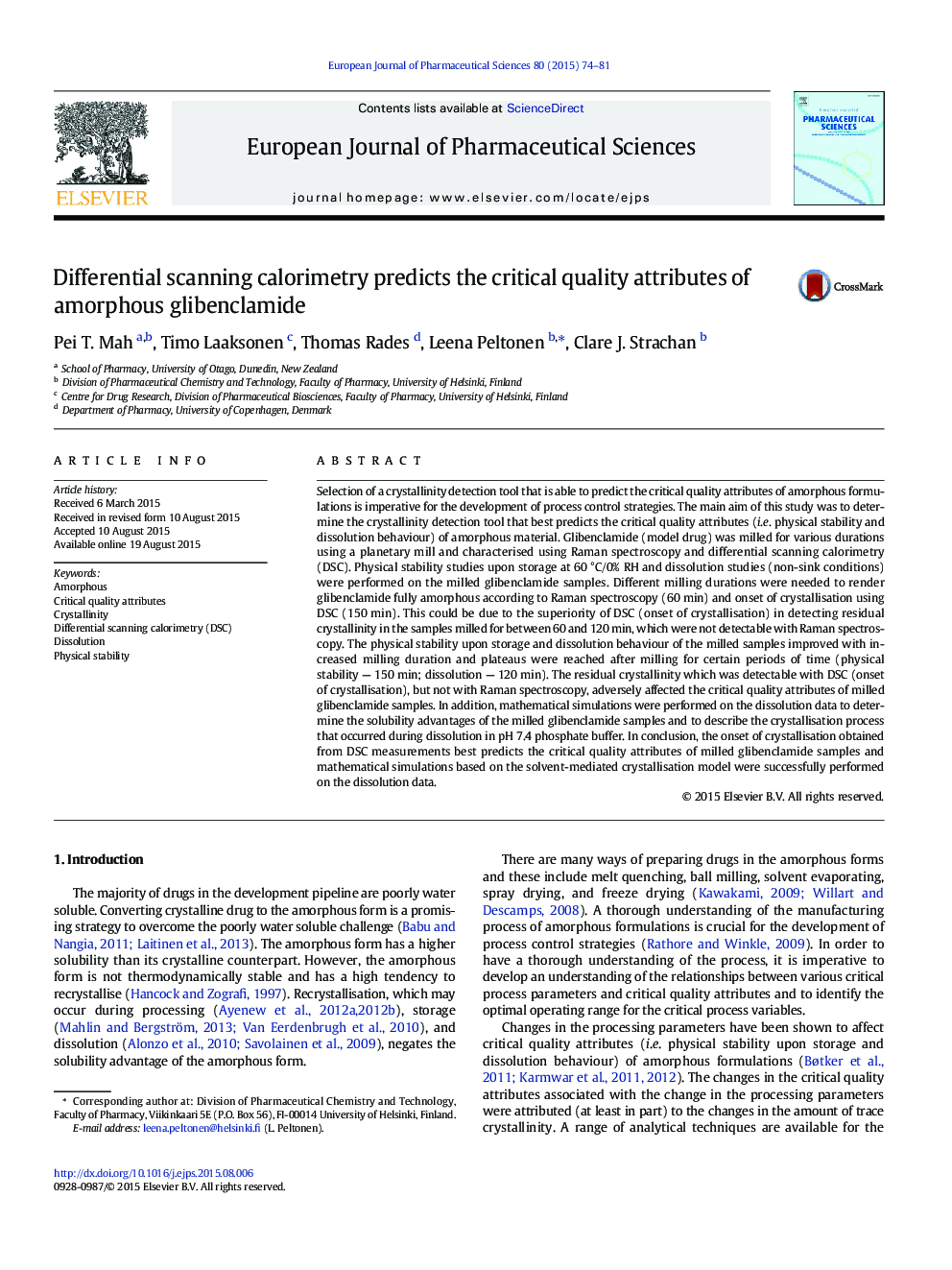| کد مقاله | کد نشریه | سال انتشار | مقاله انگلیسی | نسخه تمام متن |
|---|---|---|---|---|
| 2480136 | 1556170 | 2015 | 8 صفحه PDF | دانلود رایگان |
Selection of a crystallinity detection tool that is able to predict the critical quality attributes of amorphous formulations is imperative for the development of process control strategies. The main aim of this study was to determine the crystallinity detection tool that best predicts the critical quality attributes (i.e. physical stability and dissolution behaviour) of amorphous material. Glibenclamide (model drug) was milled for various durations using a planetary mill and characterised using Raman spectroscopy and differential scanning calorimetry (DSC). Physical stability studies upon storage at 60 °C/0% RH and dissolution studies (non-sink conditions) were performed on the milled glibenclamide samples. Different milling durations were needed to render glibenclamide fully amorphous according to Raman spectroscopy (60 min) and onset of crystallisation using DSC (150 min). This could be due to the superiority of DSC (onset of crystallisation) in detecting residual crystallinity in the samples milled for between 60 and 120 min, which were not detectable with Raman spectroscopy. The physical stability upon storage and dissolution behaviour of the milled samples improved with increased milling duration and plateaus were reached after milling for certain periods of time (physical stability — 150 min; dissolution — 120 min). The residual crystallinity which was detectable with DSC (onset of crystallisation), but not with Raman spectroscopy, adversely affected the critical quality attributes of milled glibenclamide samples. In addition, mathematical simulations were performed on the dissolution data to determine the solubility advantages of the milled glibenclamide samples and to describe the crystallisation process that occurred during dissolution in pH 7.4 phosphate buffer. In conclusion, the onset of crystallisation obtained from DSC measurements best predicts the critical quality attributes of milled glibenclamide samples and mathematical simulations based on the solvent-mediated crystallisation model were successfully performed on the dissolution data.
Figure optionsDownload high-quality image (120 K)Download as PowerPoint slide
Journal: European Journal of Pharmaceutical Sciences - Volume 80, 1 December 2015, Pages 74–81
